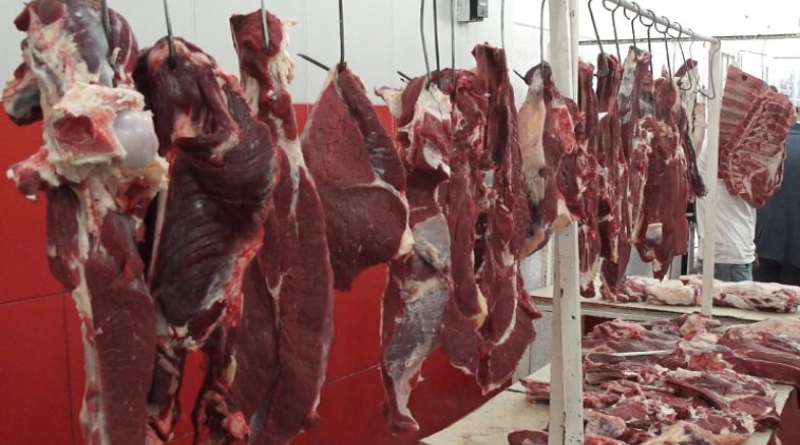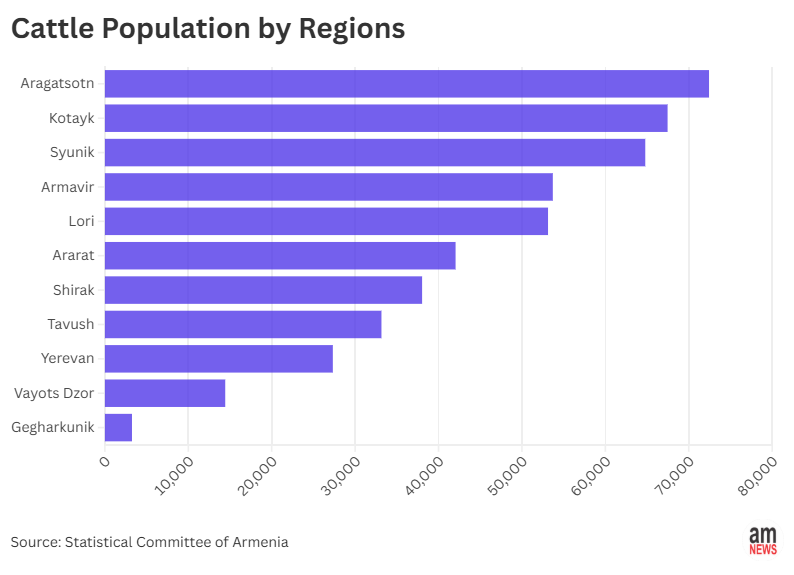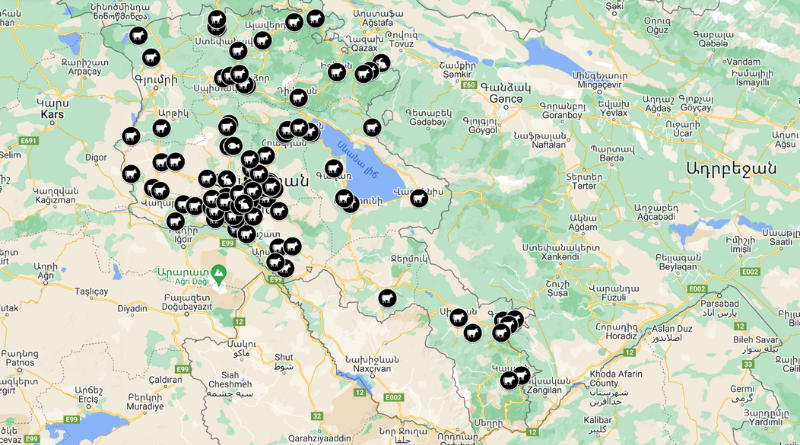
Do Slaughterhouses Meet the Population’s Needs?
In Armenia, the mandatory slaughterhouse requirement came into effect in 2020, aiming to improve food safety standards and reduce illegal animal slaughter and unhygienic meat processing practices. However, the law has faced backlash from farmers who often lack the resources to transport animals or access slaughterhouse services. Speaking with AMNEWS, the owner of a regional slaughterhouse stated that slaughtering costs range from 3,000 to 15,000 AMD.
Gegharkunik region leads Armenia in terms of the number of cattle.

Although the data shows that Yerevan has the lowest cattle population, the map reveals that slaughterhouses are mainly concentrated in Yerevan and nearby regions. The remaining slaughterhouses are either located in regional centers, large towns, or their surroundings. As of last year, the government admitted that the total number of slaughterhouses in the country doesn’t even reach 100, with half of them non-operational. Notably, many of these (around 44) are private enterprises, which are not accessible to the broader population.

This uneven distribution is one of the reasons why non-slaughterhouse processing continues in some areas. For example, in Gum Market, the Food Safety Inspection Body recently confiscated and incinerated around 1 ton of meat. This became reason of protests among butchers. The non-slaughterhouse meat, without proper inspection, was directly sent for incineration. 8 butchers who resisted were detained for 72 hours. A key issue they raised is the significant distance of slaughterhouses from residential areas. For instance, in Meghri, there are no operational slaughterhouses, forcing residents to travel either to Kapan or Goris. This demonstrates that slaughterhouses fail to fully meet society’s needs.
